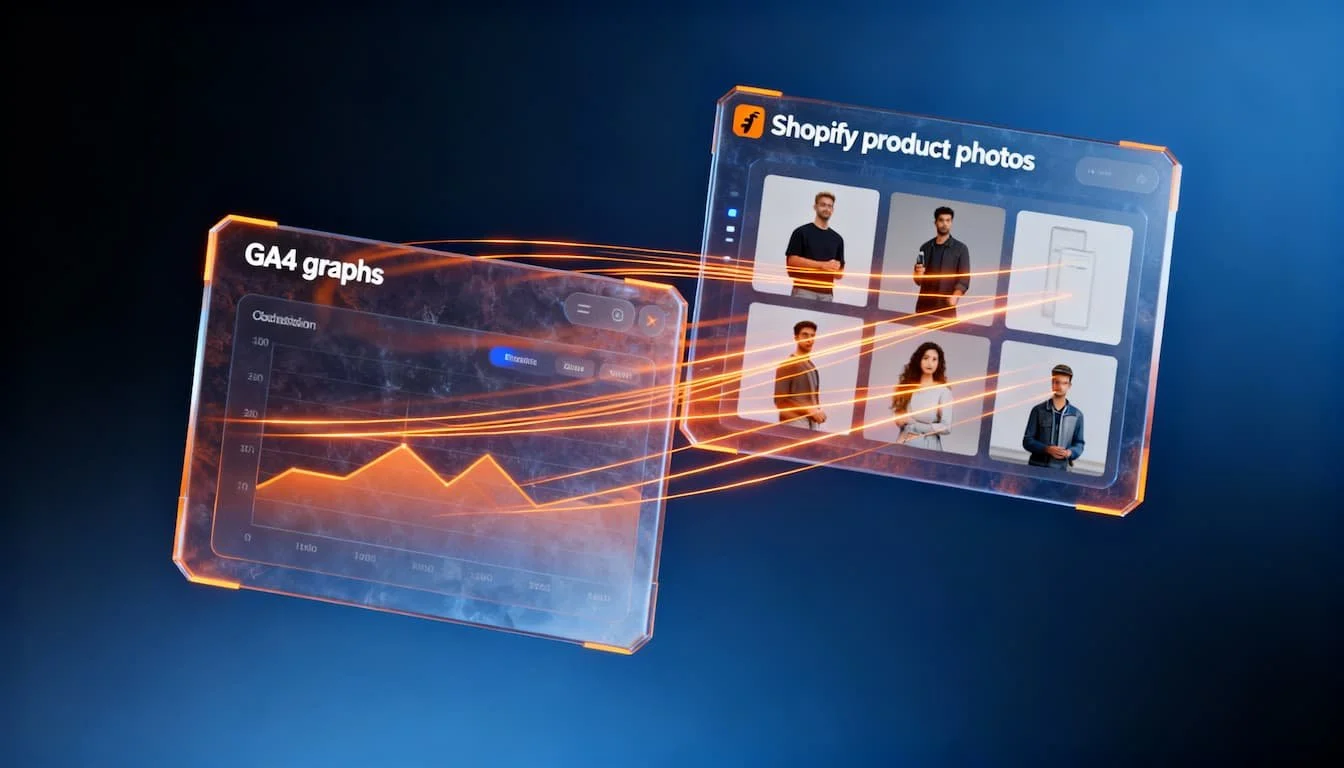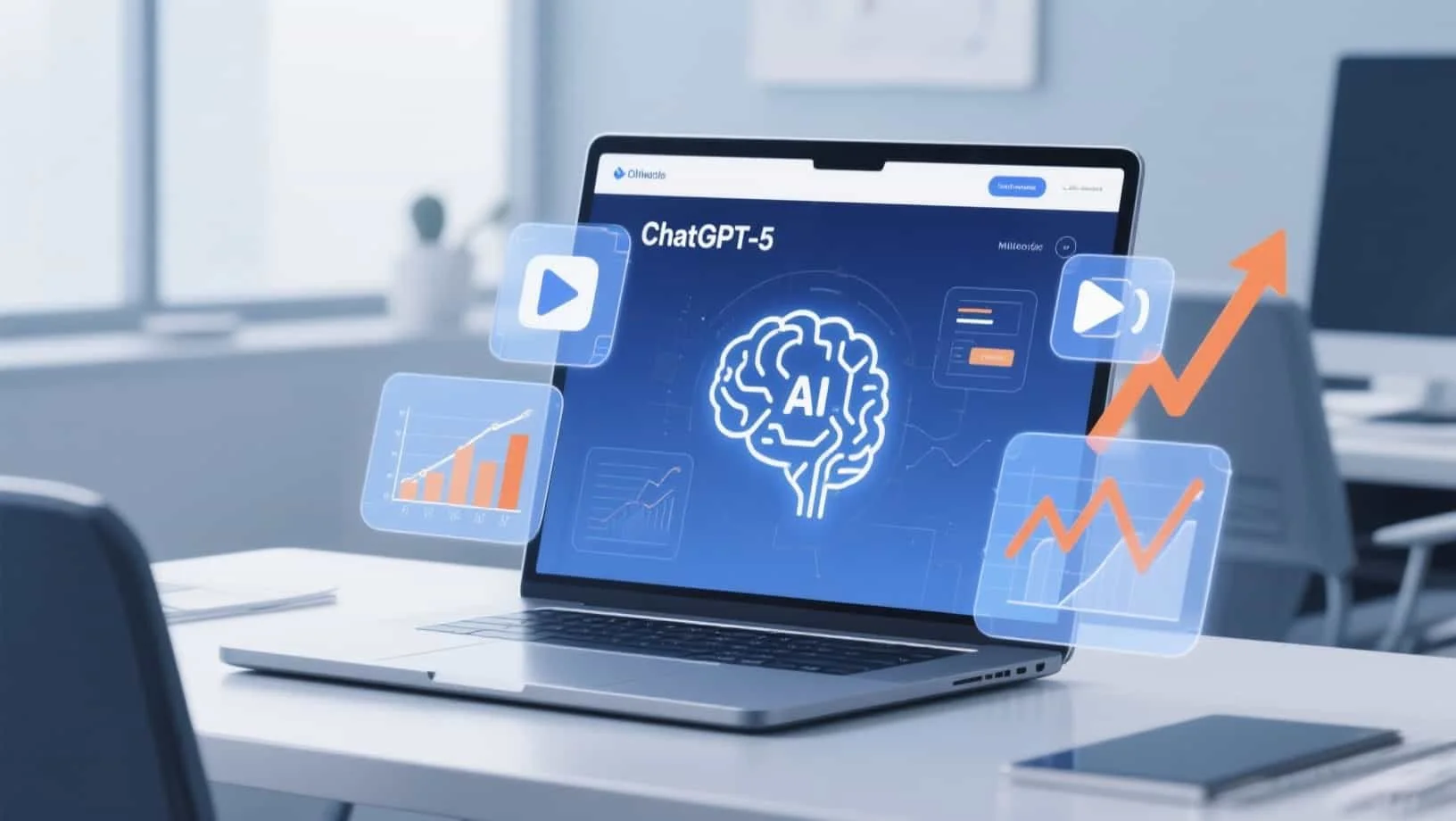Google Ads vs. Meta Ads for Shopify: which platform to choose in 2026?
The e-commerce world is changing rapidly. With more than 4.8 million Shopify stores vying for attention in 2026, the choice between Google Ads and Meta Ads is more crucial than ever. Both platforms have their own strengths, but which one suits your goals?
This guide explains exactly when to go for Google Ads and when Meta Ads is the better choice. With concrete figures from 2025, practical tips, and clear decision trees, I'll help you make the right choice for your Shopify webshop.
Do you want to get started with performance marketing right away? Or are you looking for help with setting up your Shopify store? We are happy to help you.
- Google Ads: High purchase intention users, extensive reach, but higher competition and complexity
- Facebook Ads: Detailed targeting, visual ads, cost-efficient, but lower purchase intention
- Strategic choice: Google for direct sales, Facebook for brand building and customer loyalty
- Best approach: Combined strategy that leverages both platforms for maximum effectiveness
- Consideration: Product type, target audience, marketing goals, budget, and desired ROI determine platform choice
What has changed in 2026?
The advertising landscape has had some major shocks. AI is fundamentally transforming online marketing, iOS 14+ updates are limiting tracking, and customers are shopping on more platforms than ever. In addition, costs have increased: Google Ads now costs an average of $5.26 per click versus Meta's $1.72.
But higher costs do not automatically mean worse results. On the contrary: 65% of all sectors saw better conversion rates in 2025. The key? The right strategy on the right platform.
If you're unsure which approach works best for your company, consider an AI audit to optimize your current marketing stack.
Google Ads in 2026: when and why
What is Google Ads?
Google Ads focuses on search intent. When someone searches for "Italian leather handbag," that person probably wants to buy. Your ad appears precisely at that moment of high purchase intent.
The platform includes:
Search Ads: text ads in search results
Shopping Ads: product ads with image and price
Performance Max: automated campaigns across all Google properties
YouTube Ads: video ads
Display Network: banner ads on millions of websites
When do you choose Google Ads?
Perfect for:
Expensive products (€200+)
B2B and business target groups
Local services ("plumber Amsterdam")
People who already know what they want
Direct ROI-focused campaigns
Examples:
A coffee maker of €400
Professional software or services
Replacement products ("iPhone 15 case")
Seasonal products ("women's winter jackets")
Google Ads advantages in 2026
High conversion value: Average conversion rate of 3.68% across all sectors
Intent-driven: Users are actively searching
Broad reach: 8.5 billion searches per day
Reliable tracking: Less dependent on third-party cookies
“AI can help and harm in marketing. Google's Performance Max uses machine learning to optimize bids and placement for more conversions, but it can also generate fraudulent leads that affect ROI.”
Source: LinkedIn - AI can help AND hurt marketing
For more insight into Google Ads optimization strategies, check out our comprehensive guide.
Google Ads disadvantages
High costs: $5.26 average CPC in 2025
Competition: Popular keywords are expensive
Limited visual creativity: Primarily text-based
Complexity: Steep learning curve for optimization
Meta Ads in 2026: the power of social commerce
What are Meta Ads?
Meta Ads (formerly Facebook Ads) works with interest-based targeting. Instead of waiting for people to search, you show your product to people who are likely to be interested. The platform includes Facebook, Instagram, Messenger, and WhatsApp.
Main formats:
Single Image/Video Ads: classic ads
Carousel Ads: multiple products in one ad
Dynamic Product Ads: personalized product recommendations
Reels/Stories Ads: mobile-first video content
Collection Ads: immersive product catalogs
When do you choose Meta Ads?
Perfect for:
Visual products (fashion, lifestyle, food)
Impulse buys (under €100)
B2C and consumer brands
Brand building and awareness
Retargeting and customer loyalty
Examples:
Fashion and jewelry
Home decor and gadgets
Beauty and care products
Food and supplements
Meta Ads advantages in 2026
Lower costs: $1.72 average CPC
Visual power: Carousel ads have 20% lower CPC than static ads
Precision targeting: Detailed interest and behavior targeting
Creative variations: AI-driven Advantage+ Creative optimization
Social proof: Reviews and reactions increase trust
“The real magic happens when you use both Google Ads and Facebook Ads. We see so much success with this approach that we only work with clients who run ads on multiple platforms. We call it omnichannel ads management.”
Source: Impact Plus - Google Ads vs Facebook Ads: Which is better
Want to learn more about effective conversion optimization? We share our best practices.
Meta Ads disadvantages
Lower intent: Users are not actively searching
Platform dependency: Only within the Meta ecosystem
iOS 14+ impact: Limited tracking and targeting
Creative-intensive: More investment in content needed
The numbers: Google vs. Meta in 2026
The decision tree: which platform do you choose?
Start here: What is your primary goal?
Direct sales with high intent → Google Ads
Brand building and awareness → Meta Ads
Both → Hybrid strategy
Analyze your product:
High value (€200+) + Rational purchase → Google Ads
For example: laptop, kitchen appliances, business software
Visually appealing + Emotional purchase → Meta Ads
For example: clothing, jewelry, lifestyle products
Complex products that require explanation → Google Ads + YouTube
Trending/seasonal products → Meta Ads for quick exposure
Consider your target audience:
B2B professionals → Google Ads (LinkedIn for very specific target groups)
Consumers 25-45 years → Both platforms
Gen Z (18-25) → Meta Ads (Instagram/TikTok)
55+ generation → Google Ads + Facebook
Budget and resources:
Beperkt budget (<€1000/maand) → Start met Meta Ads
Large budget (€5000+/month) → Both platforms
Little time for creatives → Google Ads
Strong content capacity → Meta Ads
Shopify-specific optimizations for 2026
Google Ads + Shopify
Google Shopping integration:
Use Shopify's Google & YouTube Channel
Automatically synchronize your product catalog
Optimize product titles for SEO
Average 3.5x ROAS with well-optimized feeds
Performance Max campaigns:
Combines Search, Shopping, YouTube, and Display
Upload high-quality product images
Use your best-selling products as base data
Want to delve deeper into Shopify SEO? Our checklist helps you step-by-step.
“Choose Google Ads when customers are actively searching for what you sell. Choose Facebook Ads to create demand and attract attention when people are not actively shopping.”
Source: Shopify - Google Ads vs. Facebook Ads: Best for Business in 2025
Meta Ads + Shopify
Meta Pixel optimization:
Install Conversions API for better tracking
Set up custom conversions (AddToCart, InitiateCheckout)
Make use of Shopify's native Meta integration
Catalog integration:
Real-time product availability
Automatic price updates
Dynamic Product Ads for shopping cart abandoners
Discover how AI can optimize your Shopify apps for even better results.
Shopping cart abandonment: platform comparison
Google Ads approach:
RLSA (Remarketing Lists for Search Ads)
Dynamic Search Ads for visitors
Gmail promotions for shopping cart abandoners
Meta Ads approach:
Dynamic Product Ads with discount
Carousel ads with related products
Video testimonials for trust
Performance 2025: Meta wins with a 23% higher recovery rate for shopping cart abandonment.
Also read our guide on e-commerce conversion optimization for more shopping cart recovery tactics.
Advanced strategies for 2026
AI and automation
Google Ads:
Smart Bidding strategies (Target ROAS, Target CPA)
Responsive Search Ads with 15 headlines
Auto-applied recommendations (monitor these!)
Meta Ads:
Advantage+ Shopping campaigns
AI-generated creative variations
Automated placement optimization
Creative trends that work
Google Ads:
Use brand name in headings (verification badge limited availability)
Implement extensions: sitelinks, callouts, structured snippets
Test responsive search ads vs. exact match ads
Meta Ads:
UGC content performs 40% better than brand content
Carousel ads with product bundles
Short video for Reels placements
Social proof in creative content (reviews, ratings)
The hybrid strategy: best of both worlds
Most successful Shopify stores use both platforms strategically:
Phase 1: Google for conversion
Start with branded search campaigns
Implement Shopping ads for top products
Use RLSA for website visitors
Phase 2: Meta for growth
Lookalike audiences of Google customers
Awareness campaigns for new products
Retargeting of Google traffic
Phase 3: Cross-platform optimization
Share creative insights between platforms
Use Google data for Meta targeting
Implement unified attribution with tools like Triple Whale
Cost control and ROI optimization
Google Ads budget management
Starting budgets:
€30-50/day for new campaigns
€100+/day for Shopping campaigns
70/30 split Search vs Shopping
Optimization tips:
Use Target ROAS bidding strategy with sufficient conversions (30+ per month)
Implement negative keywords weekly
Analyze Search Terms reports for new opportunities
Meta Ads budget management
Starting budgets:
€20-30/day for new audiences
€50+/day for lookalike campaigns
60/40 split prospecting vs retargeting
Optimization tips:
Test Cost Cap vs Bid Cap bidding strategies
Use Campaign Budget Optimization (CBO)
Refresh creative content every 2-3 weeks
“Paid searches are typically more expensive per click, but conversion rates are usually higher. Therefore, it is important to measure your marketing results as a combined return on ad spend instead of comparing cost per acquisition per channel.”
Source: HawkSEM - Google Ads vs. Facebook Ads: Pros, Cons + How to Budget
Attribution and tracking in 2026
The biggest challenge for e-commerce: cross-device and cross-platform tracking.
The tracking crisis
Challenges:
iOS 14+ limits Meta tracking
Third-party cookies are disappearing
Customer journey becomes more complex
Solutions:
Implement server-side tracking
Use first-party data (quizzes, surveys)
Invest in attribution tools (Triple Whale, Northbeam)
Focus on marketing mix modeling (MMM)
Practical tracking setup
Must-haves for Shopify:
Google Analytics 4 Enhanced Ecommerce
Meta Pixel + Conversions API
Server-side Google Tag Manager
Customer lifetime value tracking
Cross-platform attribution tool
Common mistakes and how to avoid them
Google Ads mistakes
❌ Too broad keywords: "clothing" instead of "women's winter coat"
✅ Specific long-tail: match customer intent precisely
❌ No negative keywords: wasting money on irrelevant searches
✅ Weekly negative keyword review: eliminate waste
❌ Poor landing pages: sending product to homepage
✅ Direct to product: reduce click-to-conversion steps
Meta Ads mistakes
❌ Too narrow audiences: under 1 million people
✅ Broad lookalikes: let algorithm optimize
❌ Same creative for too long: ad fatigue after 2-3 weeks
✅ Creative rotation: plan variations in advance
❌ Wrong campaign objectives: traffic instead of conversions
✅ Match objective with goal: conversions for sales
Seasonal strategies
Q4 and holidays (Oct-Dec)
Google Ads focus:
Increase budgets 150-200% for Shopping
Implement Countdown extensions
Target gift-related keywords
Meta Ads focus:
Early bird discount campaigns
Gift guide carousel ads
Increase remarketing frequency
Q1 new year (Jan-Mar)
Google Ads:
Reduce budgets 20-30%
Focus on new year keywords
Test new product categories
Meta Ads:
Health/fitness related campaigns
Spring collection teasing
Lookalike of Q4 customers
Platform-specific optimizations
Google Shopping feed optimization
Essential elements:
Product title: brand + type + core features + color/size
High-quality images: 800x800px minimum, white background
Competitive prices: monitor competitors weekly
Rich product data: GTIN, MPN, condition
Example of an optimized title:
❌ "Nice dress"
✅ "ZARA Midi Wrap Dress Women - Black - Size M - Long Sleeve"
Meta creative optimization
Video content that works:
15-second product videos: quick product demonstrations
UGC reviews: real customers using the product
Behind the scenes: production/packaging process
Styling tips: how-to-wear/use content
Image best practices:
Clear, high-contrast visuals
Lifestyle photos versus sterile product photos
Text overlay under 20% of image
Consistent brand appearance
Emerging trends and future
AI and machine learning
Google Ads 2026:
Performance Max campaigns are becoming more dominant
Smart Creative tools for automated ad generation
Predictive audiences based on Google data
Meta Ads 2026:
Advantage+ Shopping campaigns automation
AI-generated creative variations
Cross-app remarketing (Facebook to WhatsApp)
New platforms and channels
Emerging players:
TikTok Ads: Gen Z dominance, especially for trendy products
Reddit Ads: 51% growth in users, less competition
Snapchat: effective for lifestyle brands
Platform diversification strategy:
Master Google + Meta first (80% budget)
Test alternative platforms (15% budget)
Experiment with emerging channels (5% budget)
Practical implementation: step-by-step
Week 1-2: Foundation
Google Ads:
Set up conversion tracking
Import product feed
Launch branded search campaign
Start Shopping campaign with top 20 products
Meta Ads:
Install Pixel + Conversions API
Upload customer list for lookalikes
Start broad audience campaign
Set up retargeting campaigns
Week 3-4: Optimization
Both platforms:
Analyze performance data
Optimize audience targeting
Test creative variations
Adjust budgets based on performance
Month 2+: Scaling
Identify winning campaigns:
ROAS > 3.5 for Google Shopping
ROAS > 4.0 for Meta conversion campaigns
CPA below target for lead generation
Budget scaling rules:
Increase budgets 20% per week for winning campaigns
Test new audiences/keywords
Implement cross-platform synergies
The bottom line: your action plan
If you're starting with advertising:
Beperkt budget (<€1500/maand): → Start met Meta Ads voor lagere CPCs en audience building
Higher budget (€3000+/month): → Start hybrid: 60% Google, 40% Meta
If you are already active:
Google Ads only: → Add Meta for audience expansion and retargeting
Meta Ads only: → Add Google Shopping for high-intent traffic
Consider a professional performance marketing approach for optimal results.
The Complete Framework:
Analyze current performance: what's already working?
Set clear goals: awareness vs. conversions
Choose your main platform: based on product + target audience
Set up tracking: before launching campaigns
Start small and test: iterate based on data
Scale winners: increase budgets of performing campaigns
Optimize cross-platform: use insights from both
Would you like professional guidance with this process? Check out our Shopify marketing services or schedule a free strategy consultation.
In 2026, successful advertising revolves around strategically combining platforms based on your specific business goals. Google Ads for intent, Meta Ads for reach, and both together for maximum impact.
The question isn’t Google vs. Meta – it’s how you optimally use both for your Shopify success.

🚀 More leads, higher conversion, better ROI
This article gave you insights. Now it's time for action. Whether you want to build a profitable webshop, generate more revenue from performance marketing or SEO, or grow with AI-marketing - we'll help you move forward concretely.
💬 Discuss your challenge directly with Frederiek: Schedule a free strategy session or send us a message
📧 Prefer to email? Send your question to frederiek@clickforest.com or call +32 473 84 66 27
Strategy without action remains theory. Let's take your next step together.
Frequently asked questions about Google & Meta ads
-
Google Ads: €1000/month for effective Shopping campaigns Meta Ads: €500/month for statistically significant testing
-
Google Ads: 2-4 weeks for optimization
Meta Ads: 1-2 weeks for initial results, 4-6 weeks for stable performance -
That depends on your product and target audience. Google has higher intent, Meta has lower costs. On average, we see:
Google Ads: 250-400% ROAS
Meta Ads: 300-500% ROAS
-
No. Start with one platform based on your specific situation. Add the second platform when your primary platform is performing stably.
-
Use attribution tools like Triple Whale, Northbeam, or at a minimum Google Analytics 4 with enhanced e-commerce tracking.
-
Incorrect landing pages (direct bounce)
Too broad targeting (budget wastage)
No negative keywords (irrelevant traffic)
Creative fatigue (decreasing performance)
Incorrect campaign objectives (optimizing for the wrong metric)
-
Yes, but with monitoring. Google's Smart Bidding and Meta's Advantage+ are advanced but require proper setup and regular monitoring.
-
Google Ads: Test new headlines/descriptions monthly Meta Ads: Refresh visual creatives every 2-3 weeks
-
Absolutely. Q4 remains peak season, but prepare earlier. Start holiday campaigns in October, not November.
-
AI makes platforms better at automatic optimization, but human strategic input remains crucial. Focus on delivering quality data and creative guidance.
Sources and references
Google Ads benchmarks and performance
WordStream: "2025 Google Ads benchmarks: competitive data and insights for every sector" - https://www.wordstream.com/blog/2025-google-ads-benchmarks
TheeDigital: "2025 Google Ads benchmarks: trends and optimization strategies" - https://www.theedigital.com/blog/2025-google-ads-benchmarks
Impulse Analytics: "Google Ads best practices 2025 for e-commerce companies" - https://www.impulse-analytics.com/en/google-ads-best-practices-2024-for-your-e-commerce-business/
Meta Ads trends and strategies 2025
Stryde: "E-commerce Meta Ads trends and insights for 2025" - https://www.stryde.com/ecommerce-meta-ads-trends-2025/
LeadsBridge: "Meta ads best practices to follow in 2025" - https://leadsbridge.com/blog/meta-ads-best-practices/
GoDataFeed: "Proven strategies to optimize your Meta Ads for e-commerce success" - https://www.godatafeed.com/blog/optimize-meta-ads-ecommerce
Platform comparisons and strategies
Shopify: "Google Ads vs Facebook Ads: the best choice for companies in 2025" - https://www.shopify.com/blog/google-ads-vs-facebook-ads
Gravitate Design: "Google Ads vs Facebook Ads: which works better in 2025?" - https://www.gravitatedesign.com/blog/google-ads-vs-facebook-ads/
WordStream: "Meta Ads vs Google Ads: 6 key differences and which is better" - https://www.wordstream.com/blog/ws/2023/08/15/meta-ads-vs-google-ads
E-commerce advertising trends and future
DesignRush: "Top 3 e-commerce advertising trends for 2025" - https://www.designrush.com/news/3-top-trends-shaping-ecommerce-advertising-in-2025
Kaya: "E-commerce advertising and marketing trends to look out for in 2025" - https://www.usekaya.com/blog/ecommerce-advertising-trends
CropInk: "Shopify advertising in 2025: how to generate more sales with smart ads" - https://cropink.com/shopify-advertising











